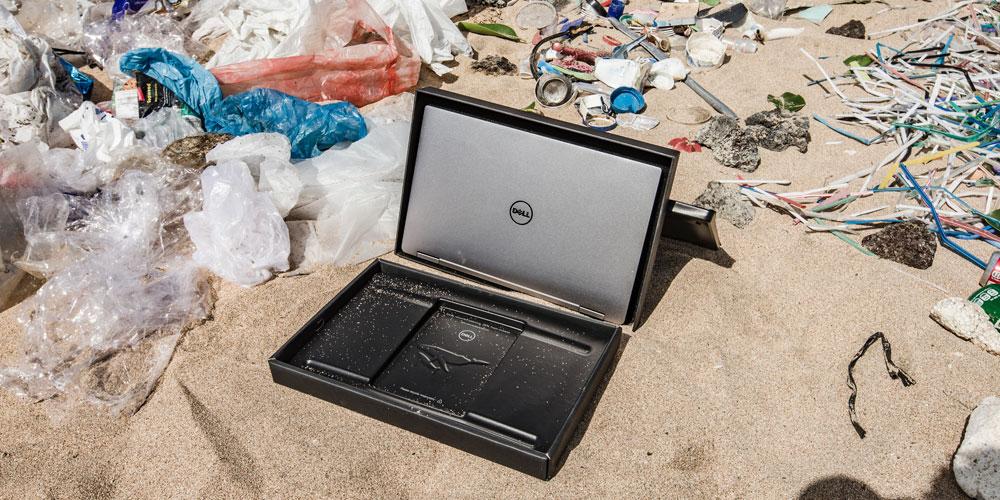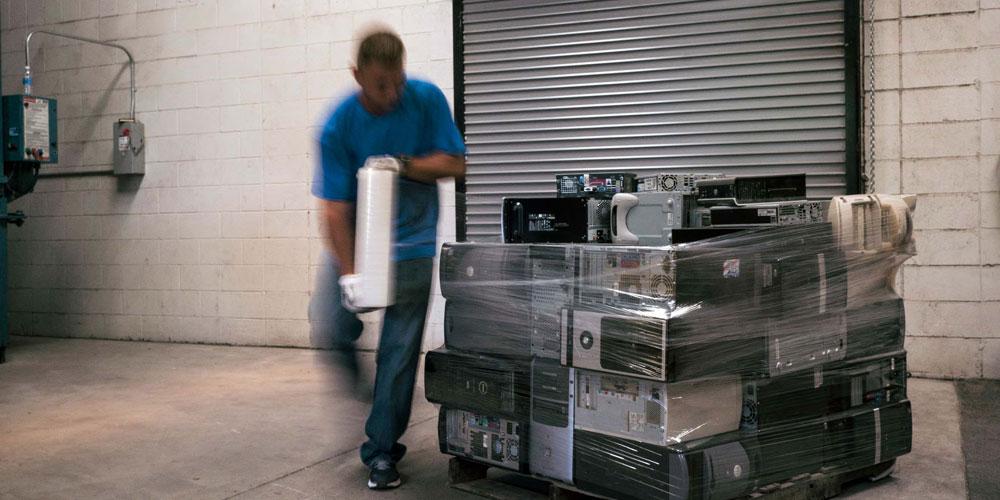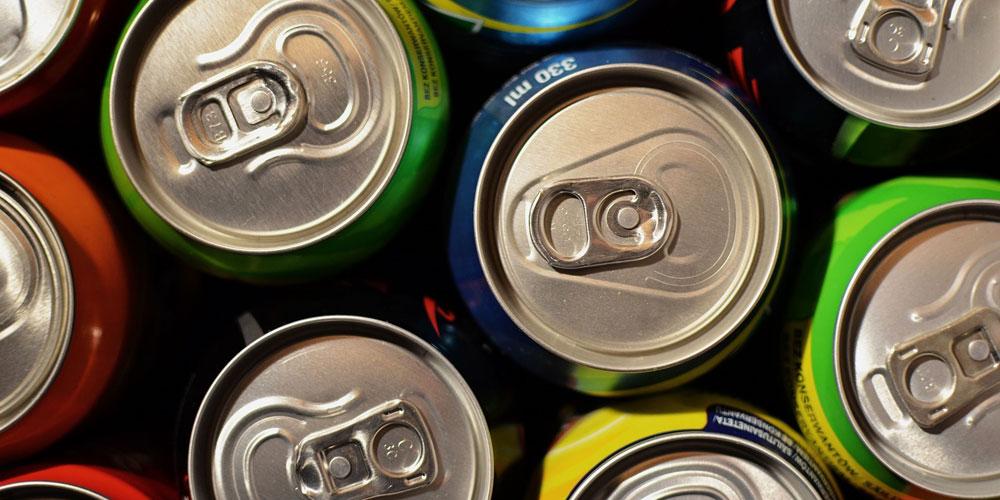The Breakdown on What Happens to Your Laptop to #BeRecycled
by Stephen Roberts, Sustainability Strategist
Originally published on Direct2Dell
It’s one of those statistics that stays with you: recycling aluminum takes about 95 percent less energy than processing new aluminum from raw materials.
The good news is people kind of “get it” when it comes to recycling aluminum cans. They are the most-recycled item and something like 120,000 of them get recycled in the U.S. every minute. While the rates for plastic bottles (31.1 percent in 2015) and paper (66.8 percent in 2015) are also high, there’s always room for improvement.
That includes recycling our technology gadgets. While successful infrastructure exists in some countries and the informal reuse/recycling sector pick up some of the materials, global estimates by the United Nations Environmental Program (UNEP) suggest about 80 percent of e-waste is still going into landfills and incinerators while volume is increasing by 40 percent per year. In the U.S., past figures show we collect and recycle about 27 percent of electronics. We all can do better.
I think it’s helpful to understand where recycled materials “go.” With some, like aluminum, it’s pretty easy to figure out. According to the Aluminum Association, a recycled can is processed and back on store shelves in about 60 days.
This year, the theme for America Recycles Day (November 15) is #BeRecycled. We know those cans, bottles and paper want to be recycled, but what about your old laptop?
The reality is nearly everything in a computer can be recycled. With our Dell take-back programs, we prioritize reuse first, but at some point, these materials wear out or are beyond repair.
Here’s a breakdown for how a typical PC can be recycled:
- Keys, bevel – these parts are made of plastic and are recyclable. The plastic goes through a shredding process and then sold on the commodities market as mixed plastic scrap. Some recyclers use optical sorters that create a very clean stream of plastic, with minimal metal contamination. Usually, the plastic is further purified and compounded with virgin plastics and pelletized. This pelletized resin can then be used as a recycled-content plastic. For example, we have a closed-loop process where this resin is re-used in our own supply chain to make new parts – a process that has a smaller carbon footprint, lighter environmental footprint and comes at a cost saving. It’s the poster child for why recycling works at Dell.
- Chassis/Base – these materials are primarily made of what’s known as PC/ABS plastics, which is recyclable. Some laptops also feature carbon fiber mixed with the polycarbonate plastics to keep the base cool to the touch. This material is not currently widely recycled, but it can be used in waste-to-energy processes.
- Printed Circuit Boards (PCBs), processors, and memory – these are made of multiple types of plastics, fiberglass and precious metals that can be recycled. Scrap copper, precious metals like gold, and some other non-ferrous metals are commonly recovered from computer circuit boards and other components. Once these materials have been sorted out they go through more specialized processes, e.g., circuit boards first into copper recovery, followed by specialized refining of the residues to recover other metals. These processes are usually accomplished through smelting or sometimes through hydro-metallurgical processing via acids or cyanide compounds in order to recover the gold and other precious metals.
- Batteries – when computers come into the recycling facilities, the battery is removed from the system manually. Once removed, batteries are often evaluated for reuse; if they’re not fit for further duty, they get sent for recycling. The plastic casing is first manually separated while the rest of the material is subjected to pyrolysis (a thermochemical process at high temperatures to separate various materials). The output of this process is a metal alloy and slag: the metal alloys are further treated to recover cobalt, nickel, copper and iron; lithium is typically concentrated in the slag and is often recovered.
- Drives, fans – made of plastics and metals, which can be separated and recycled.
- Cables – wire and cable that is not damaged can be reused directly. The high-grade copper can also be recovered by manual removal of insulation with simple tools or by chopping wire into small pieces, followed by a hydrological process in which the small pieces of insulation float while the copper sinks. Unfortunately, the plastic insulation from the wire chopping process is a very difficult item to recycle back into plastic products, due both to the granulated particle size and the wide mix of plastic resin types found in boxes of “mixed computer wires.” Most of the time this mixed plastics is sent to waste-to-energy” facilities (it typically has a very high BTU content).
- LCD Screen – Dell has phased out hazardous materials like mercury and arsenic from flat panel monitors making it easier to recycle display panel at their end-of-life. The recycling approach for LCD panels involves separation of the glass substrate, polarizer foils, and the elements indium and copper into individual outputs. The liquid crystals are removed by dissolving in a solution, assisted by ultrasonic irradiation. The polarizer foils are made of cellulose acetate, which is a valuable material if not degraded during the treatment process. The recovery of polarizer and glass is carried out by mechanical crushing, and gravity concentration. The obtained glass powder contains Indium Tin Oxide (ITO) and the indium is often recovered from the glass after mixing with a solvent.
- Other parts – there are other things that go into your computer, like screws, springs, small plastic parts, etc. and they are generally made from the materials above, making them mostly recyclable. They typically make up only a small portion of the overall product.
- Packaging – we are focused on delivering waste-free packaging, which includes making our packaging curbside recyclable (so you can toss it in your blue bin with the cans, plastic and paper). We use a lot of corrugated cardboard, as well as other innovative, sustainably sourced materials like the tray for our XPS 13 2-in-1 made from recovered ocean plastics.
In support of America Recycles Day, take their pledge and help your old, unused electronics achieve their dream to #BeRecycled. The Dell Reconnect partnership with Goodwill® provides free and responsible computer recycling − of any brand and in any condition − at more than 2,000 participating Goodwill locations throughout North America. You can also check-out Dell’s trade-in program at dell.com/tradein for used Dell equipment that may still have value.
This article shares one example of how Dell is committed to driving human progress by putting our technology and expertise to work where it can do the most good for people and the planet. We call this our Legacy of Good.
Explore our FY17 Annual update on our 2020 Legacy of Good Plan at legacyodgood.dell.com.





